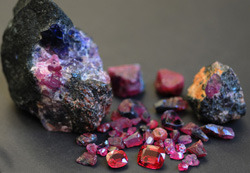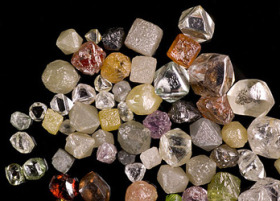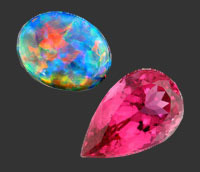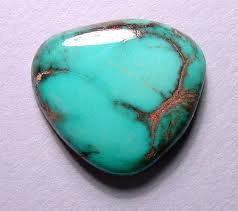Jewelry Info
The Golden Eye proudly sources its metals from Hoover and Strong.
"Throughout the Hoover & Strong factory, processes have been instituted that conserve energy and re-use materials. The precious metal refinery is the greenest in the United States. Over 15 years ago, equipment was installed that reduced chemical production by 80 percent. With zero-discharge wastewater treatment in its facility, nothing goes into the sewers, and the air is always clean.
Harmony Recycled Precious Metals - Branded in 2008, all Harmony Recycled Precious Metals at Hoover & Strong including gold, platinum, palladium, silver are 100% recycled and are certified recycled by SCS Global Systems. Hoover & Strong’s metal supply comes entirely from scrap metal purchased from jewelers and other refineries that also recycle scrap metal."
"Throughout the Hoover & Strong factory, processes have been instituted that conserve energy and re-use materials. The precious metal refinery is the greenest in the United States. Over 15 years ago, equipment was installed that reduced chemical production by 80 percent. With zero-discharge wastewater treatment in its facility, nothing goes into the sewers, and the air is always clean.
Harmony Recycled Precious Metals - Branded in 2008, all Harmony Recycled Precious Metals at Hoover & Strong including gold, platinum, palladium, silver are 100% recycled and are certified recycled by SCS Global Systems. Hoover & Strong’s metal supply comes entirely from scrap metal purchased from jewelers and other refineries that also recycle scrap metal."

Corundum
When is a sapphire not a sapphire? When it's red, because then it's a ruby!
Both gemstones are a variety of corundum, a crystalline form of aluminum oxide, a mineral second in hardness only to diamond.
Known in Sanskrit as Ratnaraj, the king of gems, rubies have been a treasured gemstone for centuries. The first reference of the stone dates back to 200 B.C., from the literature of the northern Silk Road where they were transported from China to Persia.
Rubies have been used throughout history to adorn the armor, scabbards, harnesses, and crowns of nobles, kings, and queens. Until the 20th century, the ruby was thought to be more valuable than the diamond. It is the birthstone for July and the symbol for love, vivacity, power, and passion.
Rubies are found in Tanzania, Kenya, Pakistan, Montana, North and South Carolina, and under the ice shelf in Greenland.
Burma has always been known as the source of the deep pigeon blood ruby, the most prized color in the ruby world. However, due to the Burmese government's egregious human rights record, Congress passed the Block Burmese JADE Act in October of 2008. Although the U.S. did have a ban on the trade of Burmese gems, this measure closed an important loophole that had allowed the import of Burmese gems via third countries, such as India.
The sapphire, most commonly known as a deep blue gemstone, actually has a fascinating range of color. Almost every color of the rainbow exists naturally in sapphires. A rare color-change sapphire exhibits blue in natural light and a violet-purple in artificial light.
Some stones contain inclusions of small rutile needles that exhibit a property called asterism. This effect produces the "...star sapphire, displayed only in a cabochon cut, and can have six to twelve rays emanating from its center."
The finest specimens of sapphire were mined in Kashmir, Northern India in the late 1800's to about 1920. Today they are imported from Eastern Australia, Sri Lanka, Madagascar, and are also found in Montana and North Carolina.
September is the month of the sapphire. In legend and folklore the stone is said to work as an anti-depressant and act as an aid in telepathy, clairvoyance, and astral projection. So whether you are feeling a bit down, want to know what's going on, or feel the need to get the heck off the planet, a piece of sapphire jewelry might be just what you need!
Both gemstones are a variety of corundum, a crystalline form of aluminum oxide, a mineral second in hardness only to diamond.
Known in Sanskrit as Ratnaraj, the king of gems, rubies have been a treasured gemstone for centuries. The first reference of the stone dates back to 200 B.C., from the literature of the northern Silk Road where they were transported from China to Persia.
Rubies have been used throughout history to adorn the armor, scabbards, harnesses, and crowns of nobles, kings, and queens. Until the 20th century, the ruby was thought to be more valuable than the diamond. It is the birthstone for July and the symbol for love, vivacity, power, and passion.
Rubies are found in Tanzania, Kenya, Pakistan, Montana, North and South Carolina, and under the ice shelf in Greenland.
Burma has always been known as the source of the deep pigeon blood ruby, the most prized color in the ruby world. However, due to the Burmese government's egregious human rights record, Congress passed the Block Burmese JADE Act in October of 2008. Although the U.S. did have a ban on the trade of Burmese gems, this measure closed an important loophole that had allowed the import of Burmese gems via third countries, such as India.
The sapphire, most commonly known as a deep blue gemstone, actually has a fascinating range of color. Almost every color of the rainbow exists naturally in sapphires. A rare color-change sapphire exhibits blue in natural light and a violet-purple in artificial light.
Some stones contain inclusions of small rutile needles that exhibit a property called asterism. This effect produces the "...star sapphire, displayed only in a cabochon cut, and can have six to twelve rays emanating from its center."
The finest specimens of sapphire were mined in Kashmir, Northern India in the late 1800's to about 1920. Today they are imported from Eastern Australia, Sri Lanka, Madagascar, and are also found in Montana and North Carolina.
September is the month of the sapphire. In legend and folklore the stone is said to work as an anti-depressant and act as an aid in telepathy, clairvoyance, and astral projection. So whether you are feeling a bit down, want to know what's going on, or feel the need to get the heck off the planet, a piece of sapphire jewelry might be just what you need!

Diamonds
April's birthstone, the diamond, historically symbolizes lasting love and friendship. Early Egyptians believed that the vana amoris, the vein of love, ran from the heart directly to the third finger on the left hand. We wear our engagement and wedding rings on our third finger to this day.
Recently, diamonds have been under close scrutiny by consumers, jewelers, and governments due to the exposure of conflict diamonds. The Kimberley Process is a UN mandated certification system that prevents rough diamonds mined from an area of conflict from entering the legitimate diamond supply chain. Today, 75 countries are members of the Kimberley Process, ensuring that more than 99% of diamonds available today are from conflict free sources.
At The Golden Eye, we really care about the origin of the diamonds we work with. We use a lot of "unconventional" diamonds, like rose cuts, natural cubes, macles, and diamond beads. These varieties are just now becoming popular within the mainstream jewelry industry and are naturally conflict free.
The small diamonds we use for pave and accents typically come from Australia, as do the champagne and cognac diamonds that we love so much. For more information on these diamonds, check out www.argylediamond.com.au
We have had a lot of fun the last few years with black diamonds. Black diamonds are found in Central Africa and Brazil. There is a well respected theory that these diamonds, called carbonado diamonds, arrived on earth in an asteroid that crashed here billions of years ago, before Africa and South America separated. Even though the diamond fields are now thousands of miles apart, they are part of the same, original deposit.
Recently, diamonds have been under close scrutiny by consumers, jewelers, and governments due to the exposure of conflict diamonds. The Kimberley Process is a UN mandated certification system that prevents rough diamonds mined from an area of conflict from entering the legitimate diamond supply chain. Today, 75 countries are members of the Kimberley Process, ensuring that more than 99% of diamonds available today are from conflict free sources.
At The Golden Eye, we really care about the origin of the diamonds we work with. We use a lot of "unconventional" diamonds, like rose cuts, natural cubes, macles, and diamond beads. These varieties are just now becoming popular within the mainstream jewelry industry and are naturally conflict free.
The small diamonds we use for pave and accents typically come from Australia, as do the champagne and cognac diamonds that we love so much. For more information on these diamonds, check out www.argylediamond.com.au
We have had a lot of fun the last few years with black diamonds. Black diamonds are found in Central Africa and Brazil. There is a well respected theory that these diamonds, called carbonado diamonds, arrived on earth in an asteroid that crashed here billions of years ago, before Africa and South America separated. Even though the diamond fields are now thousands of miles apart, they are part of the same, original deposit.

Opal and Tourmaline
Water, sky, fire, and rainbows...all of these elements of nature seem to be embodied in the magnificent opal.
The opal is October's birthstone.
The Australian aborigines tell the story of the Creator coming down to earth from heaven on a rainbow to bring the message of peace to humans. Where his feet touched the ground, it became alive with opalescent color.
It is a fact that 95% of the world's opals are mined in the outback of Australia.
Opals are composed of a mineraloid gel, a mineral-like substance that does not demonstrate crystallinity as most gems do. Deposited in rock fissures, such as limonite, sandstone, or basalt, the small spheres of gel cause interference and refraction manifestations, resulting in the unique color play of the opal.
The opal is made up of at least 3% water, but can have a water content as high as 20%. It can become brittle when stored dry, and the color play may pale when exposed to heat for a long period. It is best to wear your opals regularly. They need to absorb the humidity from the air and the skin. They are rated a 5.5-6 on the Mohs scale, so caution is needed in order to avoid stress and abrasion to the stone.
Ethiopian Hydrophane opals have a different relationship with humidity and oils. They are happiest when they have less contact with skin oils and perspiration.
The tourmaline is also recognized as a birthstone for October. It may be a good alternative for the person who wants to wear their jewelry a little harder . The tourmaline is 7-7.5 on the Mohs scale, making it a very durable stone.
The word tourmaline means "stone with mixed color." They are found in nature in virtually every hue of the rainbow, often with multiple colors in the same stone. The watermelon tourmaline, with three distinct colors, is one of the most fascinating specimens.
Mined mainly in Brazil and Africa, tourmaline is one of the most utilized stones in jewelry today. Rubellite describes a deep red tourmaline, Paraiba, an intense blue green, and Canary, a golden yellow. No two tourmalines are exactly alike, making them a perfect choice for one-of-a-kind pieces.
Legend has classified the tourmaline as the stone of love and friendship, rendering them firm and lasting.
The opal is October's birthstone.
The Australian aborigines tell the story of the Creator coming down to earth from heaven on a rainbow to bring the message of peace to humans. Where his feet touched the ground, it became alive with opalescent color.
It is a fact that 95% of the world's opals are mined in the outback of Australia.
Opals are composed of a mineraloid gel, a mineral-like substance that does not demonstrate crystallinity as most gems do. Deposited in rock fissures, such as limonite, sandstone, or basalt, the small spheres of gel cause interference and refraction manifestations, resulting in the unique color play of the opal.
The opal is made up of at least 3% water, but can have a water content as high as 20%. It can become brittle when stored dry, and the color play may pale when exposed to heat for a long period. It is best to wear your opals regularly. They need to absorb the humidity from the air and the skin. They are rated a 5.5-6 on the Mohs scale, so caution is needed in order to avoid stress and abrasion to the stone.
Ethiopian Hydrophane opals have a different relationship with humidity and oils. They are happiest when they have less contact with skin oils and perspiration.
The tourmaline is also recognized as a birthstone for October. It may be a good alternative for the person who wants to wear their jewelry a little harder . The tourmaline is 7-7.5 on the Mohs scale, making it a very durable stone.
The word tourmaline means "stone with mixed color." They are found in nature in virtually every hue of the rainbow, often with multiple colors in the same stone. The watermelon tourmaline, with three distinct colors, is one of the most fascinating specimens.
Mined mainly in Brazil and Africa, tourmaline is one of the most utilized stones in jewelry today. Rubellite describes a deep red tourmaline, Paraiba, an intense blue green, and Canary, a golden yellow. No two tourmalines are exactly alike, making them a perfect choice for one-of-a-kind pieces.
Legend has classified the tourmaline as the stone of love and friendship, rendering them firm and lasting.

Peridot
This bright and vibrant stone has caught the attention of humans for centuries. Some historians believe that at least some of the "emeralds" that Cleopatra wore were actually peridots. Peridot is a relatively hard mineral, 6.5-7 on the Mohs scale.
For many years the U.S. was the largest producer of peridot, which is mined in Arizona and New Mexico . China and Pakistan are now challenging the States for that title.
At one time large quantities of peridot know for their superb color and clarity were being imported from Myanmar, (formally Burma). Under the current government, peridot production has been curtailed to the point that it is no longer a factor in the industry.
Peridot is formed on Earth by volcanic activity. This stone is also found in meteors. According to folklore, wearing peridot brings luck and success.
For many years the U.S. was the largest producer of peridot, which is mined in Arizona and New Mexico . China and Pakistan are now challenging the States for that title.
At one time large quantities of peridot know for their superb color and clarity were being imported from Myanmar, (formally Burma). Under the current government, peridot production has been curtailed to the point that it is no longer a factor in the industry.
Peridot is formed on Earth by volcanic activity. This stone is also found in meteors. According to folklore, wearing peridot brings luck and success.

Rose Cut Gems
The term "rose cut" is heard more and more often when describing gemstones utilized in the jewelry industry. The Golden Eye has been using this cut for many years
What exactly is rose cut? It is a method of faceting gemstones so that the base of the stone is wide and flat with no facets; the top of the stone is domed and cut with triangular facets. These facets mimic the progressively tighter spiral of a rose, hence the name.
Most rose cuts are round, oval, or pear-shaped, but jewelers are experimenting with a variety of creative designs.
The rose cut was first introduced in the 16th century. A century later the cut had gained great acceptance and the facet arrangements became less random. Variations were based on multiples of six; six faceted roses, eighteen faceted roses, and the full rose, which consists of eighteen facets and then an upper tier of six facets.
The brilliant cut supplanted the rose cut in the 19th century but the rose cut returned at the turn of the 20th century, when the inspiration from Baroque styles drove jewelry designs. It once again fell from favor after 1910 when styles moved toward Art Deco.
For almost a century the rose cut was in retirement, but has reemerged with great momentum. Once used primarily for diamonds, the cut lends itself to many other gemstones. The look of the rose cut is softer and somewhat more natural looking than traditional faceted stones. Paired with 18kt or 22kt gold, a rose cut gem can become a timeless piece of jewelry.
Please visit our website to view many examples of rose cut jewelry.
What exactly is rose cut? It is a method of faceting gemstones so that the base of the stone is wide and flat with no facets; the top of the stone is domed and cut with triangular facets. These facets mimic the progressively tighter spiral of a rose, hence the name.
Most rose cuts are round, oval, or pear-shaped, but jewelers are experimenting with a variety of creative designs.
The rose cut was first introduced in the 16th century. A century later the cut had gained great acceptance and the facet arrangements became less random. Variations were based on multiples of six; six faceted roses, eighteen faceted roses, and the full rose, which consists of eighteen facets and then an upper tier of six facets.
The brilliant cut supplanted the rose cut in the 19th century but the rose cut returned at the turn of the 20th century, when the inspiration from Baroque styles drove jewelry designs. It once again fell from favor after 1910 when styles moved toward Art Deco.
For almost a century the rose cut was in retirement, but has reemerged with great momentum. Once used primarily for diamonds, the cut lends itself to many other gemstones. The look of the rose cut is softer and somewhat more natural looking than traditional faceted stones. Paired with 18kt or 22kt gold, a rose cut gem can become a timeless piece of jewelry.
Please visit our website to view many examples of rose cut jewelry.

Turquoise
We sometimes hear someone remark that turquoise jewelry is a "fad", or that they don't wear "Indian jewelry."
Well, if turquoise is a fad, it's got to be the longest running trend ever, as history records its popularity over 7,000 years ago! Archaeologists have recorded that the oldest known piece of jewelry is a gold and turquoise bracelet found on the arm of a mummified Egyptian Queen, around 5000 B.C.
The area once known as Persia, today's Iran, has been producing gem quality turquoise for centuries, as has China.
Native Americans have worked the stone since before the time of Christ. When the Navajo, Hopi, and Pueblo people learned silversmithing from the Spaniards in the 1800's, the stone was incorporated into their pieces. This jewelry was the precursor to the work we identify today as Indian jewelry.
Cerrillos, New Mexico is thought to be the location of the oldest turquoise mines in the country. Prior to the 1920's, the state was the country's largest producer; it is more or less exhausted today.
Arizona currently produces the most turquoise of value domestically. There are many other mines throughout the Southwest, many of which have been exhausted.
Turquoise is made up of phosphorus, copper, and aluminum. The copper is the mineral responsible for the identifying robin's egg blue color that is so valued in the stone.
The mother rock, or matrix, can often be seen running throughout the stone in a network pattern, adding interest and enhancing the beauty of the turquoise.
Most turquoise on the market today has had some kind of treatment to enhance or stabilize the stone. These procedures reduce the value of the stone in varying degrees.
Only about six percent of stones today are what we call "natural turquoise". These have not been altered in any way from their natural state. Stabilizing the turquoise is accomplished by impregnating the stone with an epoxy-type substance to make it more durable.
It is important when purchasing turquoise jewelry that the salesperson is able to indicate if the piece has been treated, or is natural.
Being a phosphate mineral, turquoise is inherently fragile and sensitive to solvents; perfume and other cosmetics will attack the finish and may alter the color of turquoise gems, as will skin oils and most commercial jewelry cleaning fluids. Prolonged exposure to direct sunlight may discolor or dehydrate turquoise. Care should be taken when wearing such jewels. Cosmetics, sunscreen, and hair spray should be applied before putting on turquoise jewelry.
After use, turquoise should be gently cleaned with a soft cloth to avoid a build up of residue, and should be stored in its own container to avoid being scratched by harder gems. Turquoise can also be adversely affected if stored in an airtight container-it likes to breathe.
Well, if turquoise is a fad, it's got to be the longest running trend ever, as history records its popularity over 7,000 years ago! Archaeologists have recorded that the oldest known piece of jewelry is a gold and turquoise bracelet found on the arm of a mummified Egyptian Queen, around 5000 B.C.
The area once known as Persia, today's Iran, has been producing gem quality turquoise for centuries, as has China.
Native Americans have worked the stone since before the time of Christ. When the Navajo, Hopi, and Pueblo people learned silversmithing from the Spaniards in the 1800's, the stone was incorporated into their pieces. This jewelry was the precursor to the work we identify today as Indian jewelry.
Cerrillos, New Mexico is thought to be the location of the oldest turquoise mines in the country. Prior to the 1920's, the state was the country's largest producer; it is more or less exhausted today.
Arizona currently produces the most turquoise of value domestically. There are many other mines throughout the Southwest, many of which have been exhausted.
Turquoise is made up of phosphorus, copper, and aluminum. The copper is the mineral responsible for the identifying robin's egg blue color that is so valued in the stone.
The mother rock, or matrix, can often be seen running throughout the stone in a network pattern, adding interest and enhancing the beauty of the turquoise.
Most turquoise on the market today has had some kind of treatment to enhance or stabilize the stone. These procedures reduce the value of the stone in varying degrees.
Only about six percent of stones today are what we call "natural turquoise". These have not been altered in any way from their natural state. Stabilizing the turquoise is accomplished by impregnating the stone with an epoxy-type substance to make it more durable.
It is important when purchasing turquoise jewelry that the salesperson is able to indicate if the piece has been treated, or is natural.
Being a phosphate mineral, turquoise is inherently fragile and sensitive to solvents; perfume and other cosmetics will attack the finish and may alter the color of turquoise gems, as will skin oils and most commercial jewelry cleaning fluids. Prolonged exposure to direct sunlight may discolor or dehydrate turquoise. Care should be taken when wearing such jewels. Cosmetics, sunscreen, and hair spray should be applied before putting on turquoise jewelry.
After use, turquoise should be gently cleaned with a soft cloth to avoid a build up of residue, and should be stored in its own container to avoid being scratched by harder gems. Turquoise can also be adversely affected if stored in an airtight container-it likes to breathe.


